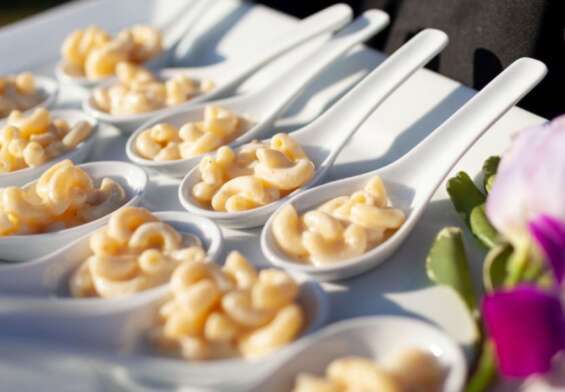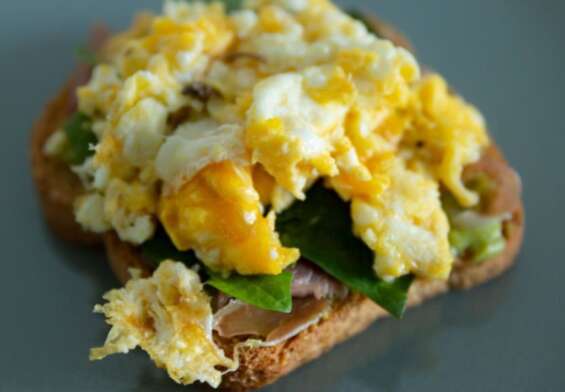
The Pegan Diet: The Best of Paleo and Vegan Combined
The Pegan Diet is a hybrid nutritional approach that combines elements of both the Paleo and the Vegan diets. It is a relatively new dietary plan that has become popular due to its ability to provide a balanced and nutritious diet while still allowing for some flexibility and enjoyment of foods. This diet plan focuses on nutrient-dense, plant-based foods and minimizes the consumption of processed foods, grains, and dairy. The Pegan Diet is a great way to improve your overall health and well-being. It provides a wide variety of foods that are rich in vitamins, minerals, and other essential nutrients. Additionally, it is an effective weight loss plan as it emphasizes whole foods that are low in calories and fat. By following the Pegan Diet, you can enjoy delicious and nutritious meals while still losing weight.
What is the Pegan Diet and How Does it Differ from Paleo?
The Pegan Diet is an interesting hybrid of two popular diets: the Paleo Diet and the Vegan Diet. You might think of it as a “Paleo-Vegan” diet. It’s like they got together and had a baby!
The main difference between the Paleo Diet and the Pegan Diet is the source of protein. While the Paleo Diet focuses on eating animal proteins such as beef, chicken, and eggs, the Pegan Diet emphasizes plant-based proteins such as beans, nuts, and seeds.
The Pegan Diet also differs from the Paleo Diet in that it allows for a wider range of grains and dairy products. While the Paleo Diet restricts grains and dairy products, the Pegan Diet allows some whole grains and dairy products, such as yogurt and cheese.
The Pegan Diet also encourages eating more vegetables and fruits than the Paleo Diet. The Pegan Diet recommends eating a wide variety of veggies and fruits and focusing on organic and unprocessed foods.
Finally, the Pegan Diet encourages healthy fats such as olive oil, flaxseed oil, and avocado. The Paleo Diet, on the other hand, encourages eating more saturated fats such as bacon and lard.
So there you have it! The Pegan Diet is a hybrid of two popular diets, the Paleo Diet and the Vegan Diet. It emphasizes plant-based proteins, allows some whole grains and dairy products, encourages eating more veggies and fruits, and encourages healthy fats. If you’re looking for a unique diet that combines the best of both worlds, the Pegan Diet might be right for you!
What are the Pros & Cons of Eating a Pegan Diet?
Pros
- You can finally have the best of both worlds – vegan and paleo! Now you can enjoy the health benefits of a vegan diet while still indulging in the occasional piece of bacon.
- You get to enjoy a variety of nutrient-rich foods, such as fruits, vegetables, nuts, and seeds.
- You can still enjoy occasional treats, like dark chocolate and some dairy products.
Cons
- You may struggle to find a balance between vegan and paleo foods, which can be a bit tricky.
- You may find yourself missing out on some of the delicious vegan dishes you used to enjoy.
- You may have to give up some of your favorite Paleo snacks, like beef jerky and processed meats.
What are the Best Supplements to Take While Eating a Pegan Diet?
If you’re living the Pegan lifestyle, then you know that it can be hard to make sure you’re getting all of the nutrients you need! Luckily, there are a few supplements that you can take to help you out. Here are the top three supplements for those living the Pegan life:
- Omega-3 fatty acid supplements: Omega-3 fatty acids are an essential part of the Pegan diet. They help reduce inflammation, promote heart health, and aid in cognitive function. So, if you’re looking for a way to get your daily dose of Omega-3s, look no further than a fish oil supplement!
- Probiotics: Probiotics are a great way to ensure that your gut health is in tip-top shape. Taking a probiotic supplement can help promote healthy digestion and absorption of nutrients. Plus, it can help to protect against harmful bacteria and viruses.
- Vitamin B12: Vitamin B12 is an important nutrient for vegans and vegetarians, and the Pegan diet is no exception. Vitamin B12 helps to keep your energy levels up and supports healthy brain function. Taking a B12 supplement is an easy way to make sure you’re getting enough of this essential nutrient.
So, if you’re eating a Pegan diet, don’t forget to add these important supplements to your daily routine! They’ll help to ensure that you’re getting all of the nutrients you need to stay healthy and energized.
What Healthy Recipes Can I Make While Eating a Pegan Diet?
Are you feeling a bit pegan-ey? Well, you’ve come to the right place! Here are some delicious, healthy recipes that are perfect for your pegan diet:
- Roasted Cauliflower and Pecan Salad: Start by roasting some cauliflower florets in the oven until they’re lightly browned. Once they’re done, toss them with some pecans, olive oil, lemon juice, and sea salt. Serve this as a side dish or as a main course.
- Sweet Potato and Beet Burger: Combine cooked sweet potatoes, beets, and oats in a food processor until they form a sticky patty. Fry up the patties in a skillet until they’re crispy on the outside and soft on the inside. Serve with a dollop of guacamole or your favorite vegan condiment.
- Avocado and Cucumber Gazpacho: Blend together a couple of avocados, some diced cucumbers, garlic, olive oil, and lemon juice. Serve chilled for a refreshing and nutritious meal.
- Grilled Eggplant and Zucchini Stack: Grill some eggplant and zucchini slices until they’re lightly charred. Stack them up with some fresh basil, tomatoes, and a drizzle of olive oil.
So, there you have it—some delicious and healthy recipes for your pegan diet. Bon appétit!
How Can I Balance My Macros While Eating a Pegan Diet?
Eating a pegan diet can be tricky when it comes to balancing your macros. But don’t worry, we’ve got you covered! Here’s how to get your macros just right while eating pegan:
- Prioritize healthy fats. Nuts, seeds, avocado, olive oil, and coconut oil are all great sources of healthy fats, so make sure to include them in your meals.
- Focus on plant proteins. Legumes, nuts, and seeds are a great way to get your protein without eating animal products.
- Keep it low-glycemic. Pegan diets emphasize low-glycemic foods, so choose complex carbohydrates like quinoa, sweet potatoes, and leafy greens instead of white rice, bread, and pasta.
- Don’t forget the fiber. Fiber helps keep you feeling full and is important for your digestive system, so make sure to include plenty of fruits and vegetables in your diet.
By following these simple tips, you can get the perfect balance of macros while eating a pegan diet!
What are the Health Benefits of Eating a Pegan Diet?
The Pegan Diet is quickly becoming a popular way to eat for health-conscious folks. But what exactly are the health benefits of eating a Pegan Diet? Well, here are just a few of the many reasons why this way of eating is so great for your health:
- You’ll get plenty of fruits and vegetables: A Pegan Diet emphasizes a wide variety of fresh fruits and vegetables, providing plenty of essential vitamins and minerals. Plus, they’re loaded with fiber to help keep you feeling full longer.
- It’s low in sugar: Sugar is a major player in weight gain and other health issues. But with a Pegan Diet, you’ll reduce your sugar intake significantly and focus on more whole food sources.
- You’ll get protein and healthy fats: A Pegan Diet includes plant-based protein sources such as nuts, seeds, and legumes, as well as healthy fats from avocados and olive oil. This balance of macronutrients helps keep you feeling satiated and energized.
- You’ll reduce inflammation: Eating a Pegan Diet helps to reduce inflammation in the body, which can reduce the risk of chronic diseases such as heart disease, diabetes, and cancer.
- You’ll lower your “bad” cholesterol: A Pegan Diet is low in saturated fat and cholesterol, which can help to lower your “bad” (LDL) cholesterol levels.
So, there you have it—the health benefits of a Pegan Diet are plentiful! If you’re looking to improve your health, consider giving this way of eating a try!
What Types of Foods are Permitted on a Pegan Diet?
If you’re looking for the latest way to stay healthy, the Pegan Diet might be just what you’re looking for! This unique diet combines the best of both Paleo and Vegan diets, giving you the unique opportunity to have your cake and eat it, too. But what kind of foods can you expect to find on the Pegan Diet? Here’s a list of all the delicious foods you can enjoy:
- Fruits and veggies: All types of fresh produce, including dark leafy greens, peppers, carrots, apples, bananas, and oranges, are all fair game.
- Healthy fats: Avocados, nuts, seeds, and olives are all encouraged on the Pegan Diet.
- Whole grains: Whole-grain pasta, oats, and quinoa are all great sources of complex carbs.
- Legumes: Beans, peas, and lentils are all great sources of protein.
- Fish and poultry: Lean cuts of fish and poultry, such as wild-caught salmon and organic chicken, are both encouraged.
- Dairy: Milk and yogurt made from unsweetened, grass-fed sources are allowed in moderation.
- Eggs: Free-range, organic eggs are a great source of protein.
- Herbs and spices: All types of herbs and spices are encouraged as they add flavor and nutrition to any meal.
- Natural sweeteners: Coconut nectar, honey, and maple syrup can be used in moderation.
So there you have it! With the Pegan Diet, you can enjoy a wide variety of flavorful and nutritious meals that will keep you feeling full and satisfied. Bon appétit!
What Foods Should I Avoid While Eating a Pegan Diet?
If you’re trying to live the pegan lifestyle, you might want to avoid some of these delicious but not-so-healthy foods:
- Sugary treats like cakes, cookies, and candy.
- Processed meats like hot dogs, bacon, and salami.
- Refined grains like white bread, white pasta, and white rice.
- Dairy products, especially those with added sugar like ice cream.
- Fried foods like French fries and chicken nuggets.
- Processed oils, like canola and vegetable oil.
And last but not least, if you’re trying to stick to a pegan diet, you should probably avoid the temptation of that bacon-wrapped, deep-fried, cheeseburger. Yum.
What Should I Know About Eating a Pegan Diet During Pregnancy?
Eating a Pegan Diet during pregnancy is a great way to stay healthy and ensure that your growing baby gets all the nutrients they need. But, before you dive into this diet, there are a few things you should keep in mind.
- You’ll need to eat more! Pregnant women need to consume an extra 300 calories per day to support the growth of their babies. So, make sure you’re getting enough of the nutrient-dense foods that the Pegan diet encourages.
- Don’t forget to snack! Healthy snacks like nuts, seeds, and fruits can help keep you energized and provide important vitamins and minerals throughout the day.
- Get your Omega-3s! Eating fatty fish like salmon and mackerel is an important part of the Pegan diet, and it can also help provide essential fatty acids for your baby.
- Don’t forget to indulge! The Pegan diet encourages eating plenty of healthy fats, like olive oil, avocados, and coconut oil. But don’t forget to indulge in some of pregnancy’s favorite treats, like dark chocolate and ice cream!
- Have fun with it! Eating a Pegan diet during pregnancy is a great way to stay healthy, but don’t forget to have fun with it too. Experiment with different recipes and flavors and enjoy the journey!
What are the Most Common Mistakes People Make When Eating a Pegan Diet?
Not Eating Enough Whole Foods: The cornerstone of the Pegan diet is eating whole, unprocessed foods, but many people make the mistake of not getting enough of them.
Not Choosing Healthy Fats: Fats are an important part of the Pegan diet, but not all fats are created equal. Make sure you’re including healthy fats like olive oil, nuts, and avocados in your diet.
Overdoing It On Processed Foods: Eating processed foods is a big no-no when following the Pegan diet. Eating too much-processed food can quickly undo any health benefits that the diet provides.
Not Getting Enough Variety: Variety is key when it comes to eating a Pegan diet. Eating the same thing every day can get monotonous and can also lead to nutrient deficiencies.
Not Eating Enough Fruits and Veggies: Fruits and vegetables are a major part of the Pegan diet, but many people make the mistake of not getting enough of them. Make sure you’re eating at least 5-6 servings of fruits and veggies every day.
Conclusion
The Pegan Diet is a great option for individuals looking to make a positive change to their diet. It is a combination of the two most popular diets, Paleo and Vegan, and it provides a balance between the two, allowing for the healthiest lifestyle possible. The Pegan Diet focuses on whole, unprocessed foods, with an emphasis on plant-based proteins, healthy fats, and complex carbohydrates. Additionally, the diet encourages an abundance of fresh vegetables, fruits, nuts, and seeds. By focusing on these nutrient-dense foods, the Pegan Diet can help individuals improve their overall health and well-being.











